Samueli School Welcomes 12 New Faculty Members
Nov. 6, 2020 - Twelve new faculty – ranging from assistant professors to experienced professionals, including three who have been appointed research center directors – are joining the Samueli School of Engineering for the 2020-21 academic year. This brings the total number of full-time faculty to 162.
Jump to:
- Biomedical Engineering
- Chemical and Biomolecular Engineering
- Civil and Environmental Engineering
- Mechanical and Aerospace Engineering
Biomedical Engineering
 Naomi Chesler
Naomi Chesler
Professor, Biomedical Engineering
Director, Edwards Lifesciences Center for Advanced Cardiovascular Technology

Research Interests: cardiovascular mechanobiology and biomechanics; engineering education; diversity, equity and inclusion in STEM
Education: Ph.D., medical engineering, Harvard-MIT Division of Health Sciences and Technology
Chesler, who previously served as the Vilas Distinguished Achievement Professor and director of the Vascular Tissues Biomechanics Laboratory at the University of Wisconsin, now directs the Edwards Lifesciences Center, where she seeks to improve cardiovascular health through the integration of mechanical engineering, vascular biology and imaging tools, and to educate the next generation of leaders in cardiovascular engineering and science. A member of the American Society of Mechanical Engineers, Biomedical Engineering Society, Society of Women Engineers and American Society for Engineering Education, Chesler is a Google Scholar and the recipient of the Whitaker Biomedical Engineering Research Award and the NSF CAREER award. She is a Fulbright fellow and a fellow of American Society of Mechanical Engineers.
Link: Edwards Lifesciences Center for Advanced Cardiovascular Technology
 Fangyuan Ding
Fangyuan Ding
Assistant Professor, Biomedical Engineering
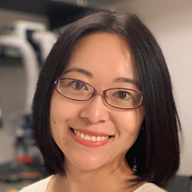
Research Interests: quantitative single molecule biology and engineering, from basic single-cell research to tool development for nucleic-acid based therapies
Education: Ph.D., biophysics, École Normale Supérieure de Paris
Before joining the UCI faculty, Ding was a postdoctoral fellow at Caltech for eight years, where she developed new tools for quantifying single-cell RNA regulation based on imaging, using these to help answer questions in molecular and cellular biology in vivo. She has made more than 20 conference presentations and invited talks, and is named on four patents licensed by Depixus, a DNA research company headquartered in Paris. Ding has won several awards and grants, including an Intel Corp. research grant and a Schlumberger Faculty for the Future fellowship.
Link: The Ding Lab
 Thomas Milner
Thomas Milner
Professor, Biomedical Engineering and Surgery
Director, Beckman Laser Institute & Medical Clinic
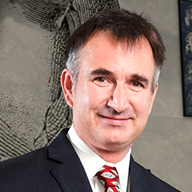
Research Interests: optical-based therapeutics and diagnostic imaging, biomedical optics sensors, optical tomography
Education: Ph.D., University of Arizona
Milner, an early investigator in photomedicine, has made important contributions in both surgery and diagnostics, including development of novel optical tomographic imaging modalities and laser surgical procedures for diagnosis and treatment of disease. An inventor on 55 U.S. patents, as well as five international patents licensed to six companies, he has authored 190 peer-reviewed articles and eight book chapters. Milner, who came to UCI from University of Texas, Austin, where he was the Joe King Professor at the Cockrell School of Engineering, is the recipient of the Coherent Young Investigator Award in Biomedical Optics, the Inventor of the Year award at the UT Austin and numerous grants from the National Institutes of Health. He is a fellow of the American Society for Laser Medicine & Surgery, the American Institute for Medical and Biological Engineering and the National Academy of Inventors.
Link: Beckman Laser Institute & Medical Clinic
 Liangzhong (Shawn) Xiang
Liangzhong (Shawn) Xiang
Associate Professor, Biomedical Engineering, and Radiological Sciences, School of Medicine
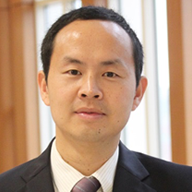
Research Interests: X-ray-induced acoustic computed tomography for in vivo radiation dosimetry and radiology, fast proton-induced acoustic imaging for precision proton therapy, and electroacoustic tomography-guided electroporation
Education: Ph.D., electrical engineering, South China Normal University
Xiang, who is affiliated with both the Beckman Laser Institute & Medical Clinic and the Chao Family Comprehensive Cancer Center, was the Lloyd G. and Joyce Austin Presidential (Assistant) Professor in the Department of Electrical and Computer Engineering and the Stephenson Cancer Center at the University of Oklahoma. He is a recipient of the student-nominated Nancy L. Mergler Faculty Mentor Award for Undergraduate Research, a research scholar award from the American Cancer Society, a postdoctoral fellowship award in prostate cancer research from the U.S. Department of Defense and the Sylvia Sorkin Greenfield Award for best paper published in medical physics from the American Association of Physicists in Medicine. A former postdoctoral fellow at Stanford, he is a member of the Acoustical Society of America, the Radiological Society of North America, the American Association of Physicists in Medicine and the International Society for Optical Engineering.
Link: TRUE Lab
Chemical and Biomolecular Engineering
 Herdeline Ardoña
Herdeline Ardoña
Assistant Professor, Chemical and Biomolecular Engineering
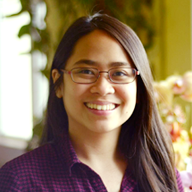
Research Interests: biomaterials, self-assembly, optoelectronics, stimuli-responsive materials, in vitro models for nanosafety
Education: Ph.D., chemistry, with certificate for advanced studies in nanobiotechnology, Johns Hopkins University
Ardoña, who completed a postdoctoral fellowship at Harvard University, seeks to address biomedical challenges by building upon fundamental chemistry, biophysics and engineering concepts. She is the recipient of an Irving S. Sigal Postdoctoral Fellowship from the American Chemical Society, an International Student Research Fellowship from the Howard Hughes Medical Institute, a Faculty for the Future Fellowship from the Schlumberger Foundation and an Emmett and Elsie Buhle Fellowship from Johns Hopkins University, awarded to one graduate student per year for academic excellence. She is an author on numerous publications and is named on a U.S. patent. At UCI, she is a member of the Sue & Bill Gross Stem Cell Research Center and the Chemical and Materials Physics (ChaMP) Program.
Link: Ardoña Research Group
 Quinton Smith (April 2021)
Quinton Smith (April 2021)
Assistant Professor, Chemical and Biomolecular Engineering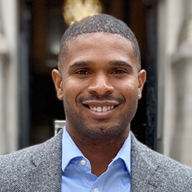
Research Interests: pluripotent stem cells, regenerative medicine, organoids, microfluidics, tissue engineering
Education: Ph.D., chemical and biomolecular engineering, Johns Hopkins University
Smith, who will join the faculty in spring, is a postdoctoral fellow at MIT, where he studies biliary tissue engineering. He is the recipient of a Hanna H. Gray Fellowship from the Howard Hughes Medical Institute, a Siebel Foundation Scholar award, a National Institutes of Health Ruth L. Kirschstein NRSA Predoctoral Fellowship and an NSF Graduate Research Fellowship.
Link: Hanna H. Gray Fellows Program
Vojislav Stamenkovic
Professor, Chemical and Biomolecular Engineering
Director, Horiba Institute for Mobility and Connectivity² (opening January, 2021)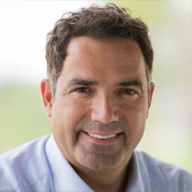
Research Interests: energy conversion and storage, surface modifications, thin films, nanoscale synthesis, electrochemical interfaces, fuel cells, electrolyzers and batteries
Education: Ph.D., physical chemistry, University of Belgrade
Stamenkovic, an expert in electrochemical systems for energy conversion and storage, comes to the Samueli School from the U.S. Department of Energy’s Argonne National Laboratory, where he was a senior scientist and group leader. Stamenkovic spent most of his career working for the U.S. National Laboratories, first, for seven years at the Lawrence Berkeley National Laboratory, and then 15 years at the Argonne National Laboratory. The author of more than 150 articles and book chapters, Stamenkovic has delivered over 200 presentations at major conferences, symposia and seminars. He has received a number of awards for his work, including a recognition award from Lawrence Berkeley National Laboratory, the Distinguished Performance Award from the University of Chicago and the U.S. DOE Hydrogen and Fuel Cells Award. Stamenkovic was named a Highly Cited Researcher in 2018, which ranks him in the top 1% of researchers worldwide by citations in 21 fields of sciences, based on the Web of Science. He currently serves as an associate editor of the ACS Catalysis journal and on the editorial board of Surface Science and Surface Science Letters.
Link: Faculy Profile
Civil and Environmental Engineering
Christopher Olivares Martinez (April 2021)
Assistant Professor, Civil and Environmental Engineering
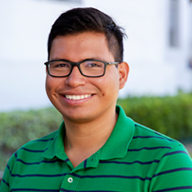
Research Interests: environmental biotechnology, remediation, metabolomics, pollutant fate in natural and engineered systems, microbial toxicity, environmental organic chemistry
Education: Ph.D., environmental engineering, University of Arizona
Olivares, who will join the faculty in spring, currently is a postdoctoral scholar at UC Berkeley, where he studies microbial transformation and in-situ chemical oxidation of specific substances and comingled contaminants in polluted sites. Previously, he was a postdoctoral fellow at Clemson University studying changes in water quality after forest fires. Olivares was named an Outstanding Graduate Student in chemical and environmental engineering at University of Arizona, where he also won a water sustainability program fellowship. Last year, he was selected to attend the United Nations 2019 UNLEASH Innovation Lab Talent-Water & Sanitation conference held in Shenzhen, China.
Link: Olivares Lab
Mechanical and Aerospace Engineering
 Perry Johnson
Perry Johnson
Assistant Professor, Mechanical and Aerospace Engineering
Research Interests: turbulent flows, particle-laden and multiphase flows, turbulent boundary layers, large-eddy simulations, scientific computing
Education: Ph.D., mechanical engineering, Johns Hopkins University
Johnson was a postdoctoral researcher at Stanford University’s Center for Turbulence Research, where he worked on developing simulation techniques for particle-laden turbulent flows in particle-based solar receivers, exploring turbulent bubble breakup beneath breaking ocean waves, and explaining fundamental aspects of the turbulent energy cascade and turbulent boundary layers. He completed two internships at NASA Glenn Research Center, then completed his master’s degree while working at Siemens Energy, where he developed computational tools for addressing thermoacoustic instabilities in gas turbine combustion chambers. Johnson was an NSF Graduate Research Fellow at Johns Hopkins University, where he won the Corrsin-Kovasznay Outstanding Paper award.
Link: Physics & Simulation of Turbulence
 Jacqueline Thomas
Jacqueline Thomas
Assistant Professor, Mechanical and Aerospace Engineering
Research Interests: design of aircraft systems and operations, aviation environmental impacts, aeroacoustics
Education: Ph.D., aerospace engineering, Massachusetts Institute of Technology
Thomas returns to UCI, where she earned a double bachelor’s degree in aerospace and mechanical engineering and was the manager of the Human Powered Airplane team. During graduate school at MIT, she received an Amelia Earhart Fellowship and worked for the MIT International Center for Air Transportation, where she conducted research in systems-level aircraft performance, flight procedure design and environmental sustainability in collaboration with the Federal Aviation Administration and industry. She was a composite manufacturing teaching assistant for the MIT AeroAstro senior aircraft design classes, involved in the design and construction of an electric distributed-propulsion UAV, a five-day-long endurance UAV and a water-landing UAV. Thomas seeks to develop and integrate technologies to improve airspace efficiency and reduce negative environmental impacts due to aviation.
Link: Faculty profile
 Camilo Velez Cuervo
Camilo Velez Cuervo
Assistant Professor, Mechanical and Aerospace Engineering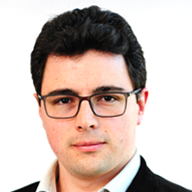
Research Interests: micro/nano robotics and device fabrication, microfabrication of magnetic microsystems, magnetic micro/nanostructures, selective magnetization of micro patterns, microsystems (MEMS), biomedical microsystems, semiconductor devices and microfluidic
Education: Ph.D., electrical and computer engineering, University of Florida, Gainesville
Velez worked at Siemens Healthcare Diagnostics as a field engineer in immunology instruments and automation software before earning his master’s and doctoral degrees at University of Florida, where he was awarded a College of Engineering recognition for creativity, and awards for excellence in research and service. He was a UF postdoctoral researcher, exploring magnetic materials for high frequency/5G communication devices. He moved to Carnegie Mellon University in 2018 to conduct research on microrobotic mechanisms and shape memory alloys. He currently serves on the IEEE Electron Devices Society’s Board of Governors and as chair of the Young Professionals Committee.
Link: Faculty profile
 Alexandra (Sasha) Voloshina
Alexandra (Sasha) Voloshina
Assistant Professor, Mechanical and Aerospace Engineering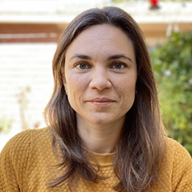
Research Interests: robotic-assistive devices for gait augmentation and rehabilitation
Education: Ph.D., kinesiology and mechanical engineering, University of Michigan
After completing dual master’s degrees in kinesiology and mechanical engineering, followed by an interdisciplinary doctoral degree in mechanical engineering and kinesiology at University of Michigan, where she was a Rackham Merit Fellow, Voloshina did postdoctoral research at Technical University of Darmstadt in Germany. There, she worked with industry and academic collaborators to evaluate how changes in prosthetic devices affect those with lower-limb amputation when walking on rough surfaces. She then completed postdoctoral work at Stanford University, where she helped develop assistive robotic devices for individuals with impaired mobility. Voloshina’s current research seeks to identify biomechanical limitations in people with motor impairment in order to develop individualized training with robotic devices and design assistive devices that interact more effectively with the user and the environment.
Link: Faculty profile
- Anna Lynn Spitzer
